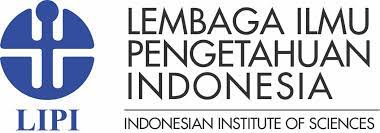Focus and Scope
The Asian Journal of Analytical Chemistry (AJAC) publishes high-quality research papers, reviews, and short communications that contribute to advancing analytical chemistry and its applications. The journal's focus and scope include, but are not limited to, the following areas:
-
Instrumentation and Techniques:
- Novel analytical instruments, methods, and techniques for chemical analysis, spectroscopy, chromatography, electrochemistry, mass spectrometry, and microscopy.
- Development and optimization of analytical instruments and techniques for enhanced sensitivity, selectivity, and accuracy.
-
Analytical Methods and Applications:
- Development, validation, and optimization of analytical methods for determining and quantifying chemical compounds, elements, drugs, pollutants, toxins, and biomarkers.
- Applications of analytical methods in various fields, including environmental analysis, pharmaceutical analysis, food and agricultural analysis, forensic and toxicological analysis, materials analysis, and bioanalytical chemistry.
-
Environmental Analysis:
- Environmental samples, such as air, water, soil, and biota, are analyzed to assess environmental quality, monitor pollutants, evaluate remediation efforts, and support environmental management and policy decisions.
- Determination of trace elements, organic contaminants, persistent pollutants, and emerging contaminants in environmental matrices.
-
Pharmaceutical Analysis:
- Analysis of drugs, pharmaceutical formulations, drug delivery systems, and pharmacokinetics using various analytical techniques to ensure their quality, safety, and efficacy.
- Development of analytical methods for drug analysis, impurity profiling, stability testing, and bioavailability studies.
-
Food and Agricultural Analysis:
- Analysis of food products, agricultural samples, additives, contaminants, and residues to ensure food safety, authenticity, and quality control.
- Determination of nutrients, toxins, pesticides, veterinary drugs, and other chemical contaminants in food and agricultural matrices.
-
Forensic and Toxicological Analysis:
- Analytical methods for identifying, quantifying, and detecting drugs, toxins, poisons, and other substances of forensic and toxicological importance.
- Biological samples, such as blood, urine, hair, and tissues, are analyzed for forensic and toxicological investigations.
-
Materials Analysis:
- Analysis of materials, including polymers, nanomaterials, catalysts, and composites, to study their composition, structure, and properties using advanced analytical techniques.
- Characterization of materials for quality control, performance assessment, and optimization of manufacturing processes.
-
Bioanalytical Chemistry:
- Analyse biomolecules, such as proteins, nucleic acids, carbohydrates, and metabolites, for biomarker discovery, disease diagnosis, drug monitoring, and understanding of biological processes.
- Development and application of analytical methods for proteomics, genomics, metabolomics, and other areas of bioanalysis.
-
Quality Control and Method Validation:
- Studies on quality control procedures, method validation protocols, reference materials, and proficiency testing to ensure accuracy, precision, and reliability of analytical measurements.
- Evaluation and comparison of different quality control approaches and their implementation in analytical laboratories.
The Asian Journal of Analytical Chemistry welcomes contributions from researchers and scientists across the globe, with a particular emphasis on Asian perspectives and applications. The journal aims to foster scientific exchange, promote innovative research, and facilitate the dissemination of knowledge in analytical chemistry.
Please note that the focus and scope provided serve as general guidelines. The journal may consider exceptional articles outside these areas if they contribute significantly to the field of analytical chemistry.
For further details regarding manuscript submission and formatting guidelines, please refer to our website or contact the editorial office directly.






















